2:20 PM
Rizkooblogsite
The majority ethnic group in Indonesia is the Javanese. Non-Javanese Indonesians frequently lament the replacement of Dutch colonialism with Javanese "colonialism." Despite being merely another regional culture, Javanese culture has a far stronger ability to affect national culture.
Perhaps as early as 3000 BC, the Austronesian ancestors of the Javanese migrated from the coast of Kalimantan. According to the Sanskrit word Yavadvipa, which is where the word "Java" derives from, the island's agricultural richness was recognized from ancient times ("island of barley").
Various indigenous Javanese states have risen over time. Most were flimsy alliances of local lords under centralized dynasties, frequently entangled in brutal succession wars. Java's north coast ports came under Muslim Malacca's influence and the dominance of non-Javanese Muslim merchants in the fifteenth century AD. In the 1830s, Java came under the administration of the Dutch government. In 1800, there were three million Javanese. By 1900, there were twenty-eight million. Beginning in the early 20th century, the Javanese took the lead in the nationalist, communist, and Islamic organizations that opposed colonialism.
Location
Java Island is around the size of Great Britain. About 63 percent of the island is under cultivation, while wet rice paddies occupy 25% of the total area. The shallow, crowded Java Sea is seen from the northern coastal plain. Plateaus plunge abruptly into the Indian Ocean along the southern shore. The provinces of Central Java and East Java (sans the island of Madura) and the Special Region of Yogyakarta make up the Javanese homeland. Along West Java's northern shore, notably around Cirebon and Banten, Javanese have lived for many years.
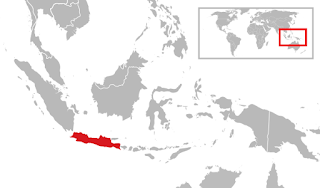 |
| Illustration map of Java Island. Credit: Wikipedia |
The Javanese make up between 60 million and 80 million people, or more than 40% of Indonesia's overall population.
Language
Austronesian is the language spoken in Java. The closest neighbors to it are Madurese and Sandiness. It splits out into a number of regional dialects.
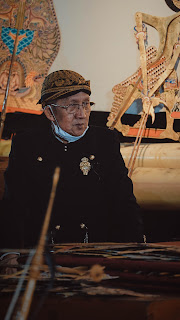 |
| Javanese famous puppeteer Ki Manteb Sudharsono. Credit: Source |
The status of the person being addressed must be taken into consideration when speaking Javanese. The two "speaking levels" are nikko and kromo, respectively. The language that a person thinks in is called Nikko. Only social inferiors and those of equal rank that one is familiar with should be addressed with nikko. Older persons, those with better rank, and those whose status is unknown to the speaker are all addressed in kromo. Even some of the simplest statements change significantly across the two levels. "Where [are you coming from]?" is Soko ngendi in nikko. It is Saking pundi in Kromo. Kromo mastery is a learned talent.
The Javanese don't have last names. They exclusively use one name as their given name. Sukarno and Suharto, both Javanese presidents of Indonesia in the 20th century, are two instances.
Folklore
The Javanese are aware of several categories of supernatural creatures. Memedis are dreadful ghosts. These include the gendruwo, who pose as well-known relatives in order to abduct individuals and transform them into invisible beings. The victim will always be invisible if they take food from the gendruwo.
Ratu Kidul, the Queen of the South Sea, is the greatest spirit. She is thought to be the fabled spouse of Java's emperors. Green is one of her favorite hues. In order to prevent being drawn down into Ratu Kidul's undersea domain, young males should avoid wearing green when at the Indian Ocean beach.
The wali songo are a different group of mythical people. These nine pious individuals introduced Islam to Java. They are said to have magical abilities, such the ability to fly.
Religion
The majority of Javanese are Muslims. Only a small percentage consistently adhere to the "five pillars of Islam" and other traditional, Middle Eastern Islamic customs. They have been given the name "santri" and are further broken down into two categories. The "conservatives" adhere to traditional Islam as it has been practiced by Javanese people for ages. The "modernists" disdain local customs and adhere to a version of Islam that is promoted by educational institutions that are Western in orientation.
 |
| Peoples wearing hijab at market in Blora, Central Java. Credit: Source |
Non-santri Muslims from Java are sometimes referred to as abangan or Islam kejawen. The five daily prayers, the Ramadan fast, or the Mecca pilgrimage are not observed by them. Slametan, ceremonial meals that are central to their religious life.
On the island of Java, up to 12% of people practice a religion other than Islam. Christians number in the hundreds of thousands. Roman Catholics make up a sizable portion of this group.
Big Holidays
The first day of the Islamic year, which begins at dusk and lasts for one Sura, is revered. People stay up all night before a holiday. They observe processions like the kirab pusaka, which is a display of royal artifacts, in Solo. Many people go to mountains or beaches to meditate. The Sekaten fair is held the week before Muhammad's birthday (12 Mulud) in Yogya and Solo as a way to commemorate the occasion. The festival features ancient gamelans, a kind of orchestra. On the actual festival, three or more sticky-rice "mountains" participate in a parade (symbolizing male, female, and baby).
 |
| Grebeg or garebeg (ꦒꦉꦧꦼꦒ꧀) is a Javanese ceremonial done on a regular basis to honor a significant event. Such as Muhammad's birthday, Eid al-Fitr, and Eid al-Adha. Credit: Source |
Relics Of The Past
A ceremony is held with special cuisine and plenty of family celebration on the 35th day after delivery.
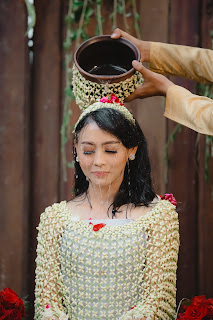 |
| Siraman is a Javanese traditions before to marriage. Credit: Source |
In villages, arranged marriages still take place, although most Javanese people pick their own spouses. The procedure starts with the guy formally requesting the woman's hand from her father or male guardian (wali). The woman's relatives go to the graves of ancestors the night before the wedding to seek their blessing. Family, friends, and neighbors attend the slametan feast.
The Islamic marriage contract between the groom and the bride's father, or wali, is fulfilled at the wedding ceremony. The bride's home is where the groom and his group travel. A joyful lunch is served along with music and dancing. After five days, the bride is free to leave with the groom. Rich families are increasingly using the more elaborate traditional rites as a status symbol.
On the third, seventh, fortieth, one hundredth, and thousandth days following death, Javanese hold slametan (ceremonies) in memory of the departed. People decorate the graves of their deceased loved ones with flowers during Ramadan and certain other festivals.
Relationships
The Javanese want to avoid conflict at all costs. Even in the face of upsetting news, they respond with a quiet voice and a resigned grin. They never outright decline any requests (however, they are very good at giving and taking hints). Respectful behavior calls for appropriate body language, such as bowing and slow, elegant motions, in addition to polite discourse. Durung jawa, or "not yet Javanese," is the term used to describe young children who have not yet mastered proper manners.
Living Circumstances
Individual homes and yards are surrounded by bamboo walls in Javanese villages. The flooring of village homes are made of earth. They are supported by a bamboo, teak, or palm trunk structure. The walls are made of bricks, wood planks, or plaited bamboo (gedek). Tiles or dried palm leaves (blarak) are used for the roofing. Moving gedek partitions are present inside the rooms. Windows are absent from conventional homes. Through cracks in the walls or openings in the ceiling, light and air can enter.
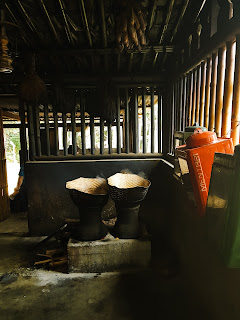 |
| Kitchen at Javanese traditional house. Credit: Source |
Personal Life
The fundamental pillar of Javanese society is the nuclear family (kuluwarga or somah). It consists of a married couple and their unmarried kids. A home may occasionally contain married children and their families as well as other relatives. If they can afford it, a married couple wishes to start their own household. If not, they often reside with the wife's parents. It's uncommon to take more than one wife. The divorce rate is greater among rural residents and less wealthy metropolitan dwellers. The kids remain in the mother's custody following a divorce. The kids could move in with other family if she remarries.
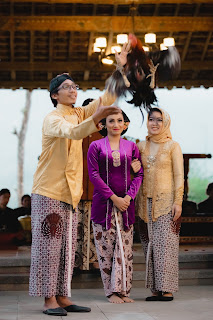 |
| A Javanese family throw a rooster as a symbolic of wedding ceremony. Credit: Source |
Javanese moms are lifelong confidantes to their offspring. But after kids become four, fathers start to distance themselves more. Although mothers have a greater degree of actual power, fathers are still seen as the household's leaders. No matter how old the child is, parents are expected to consistently correct and counsel them. However, except in the most subtly indirect manner, children never rebuke or criticize their parents.
A golongan or sanak-sadulur is composed of descendants from a common great-grandparent. Their members congregate around Islamic festivals and assist one another in hosting large parties. The alurwaris, a kinship association dedicated to the upkeep of a shared ancestor's burial seven generations ago, are much larger.
Clothing
Javanese people dress in an Indonesian manner for daily wear. Sarongs, a skirt-like garment, are also frequently worn by both men and women in public. Men should wear a sarong, a high-collared shirt, a jacket, and a blangkon, a head covering fashioned to resemble a skullcap, for ceremonial attire. Women dress in the sarong, selendang, and kebaya (long sleeved blouse) (sash over the shoulder). The woman has a hairdo known as sanggul, which involves bunning long hair into a thick, flat bun in the back. There is always a handbag on. For both men and women, traditional dancing clothes and wedding apparel expose just the shoulders.
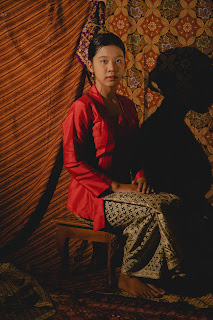 |
| A women wearing a traditional kebaya. Credit: Source |
Food
Rice, stir-fried veggies, dried salted fish, tofu, tempeh (a bar of fermented soybeans), krupuk (fish or shrimp crackers), and sambel are the most typical meal components (chili sauce). Favorite foods include pergedel (fat potato fritters), soto, sayur lodeh (a vegetable and coconut milk stew), gado-gado (a salad of partly cooked vegetables served with a peanut sauce), and (soup with chicken, noodles, and other ingredients). Chinese-inspired dishes like bakso (meatball soup), bakmi (fried noodles), and cap cay are also well-liked (stir-fried meat and vegetables). Gethuk, a pink, green, or white-hued steamed cassava dish, and other sticky-rice dishes are popular sweets (jenang dodol, klepon, and wajik).
 |
| Tumpeng is a traditional dish which is commonly served on any occasion. Credit: Source |
Javanese frequently buy cooked food from street vendors that circulate around their areas. On mats provided by sidewalk food sellers, they enjoy lesehan, late-night feasting. The tumpeng slematan, a ceremonial mound of steamed rice in the shape of a cone, is offered on important occasions. The honoree is holding a spoon with his left hand and a knife in his right. Before placing the cone on a serving dish, he first slices off the top, which often has a hard-boiled egg and some chilies as a form of decoration. The most prestigious visitor (often the oldest) is then given a horizontal slice from the top of the rice cone.
Cultural Heritage
Traditional rites, celebrations, and theater all feature a full gamelan orchestra. It includes a flute, a rebab violin, a celempung zither, keyed metallophones (like xylophones), drums, and bronze gongs. Male and female vocalists are also a part of it. There are hundreds of compositions (gending) in the music, in both loud and gentle genres, and they take many different shapes.
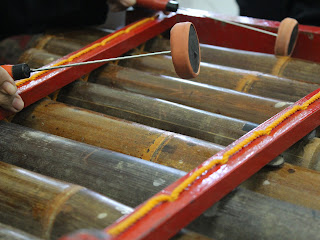 |
| Gamelan is a traditional Xylophones made from Bamboo or Bronze. Credit: Source |
Precision in body control is emphasized in traditional dance, especially in the elegant hand gestures. The bedoyo and srimpi, in which young ladies represent battle figuratively, are the most beloved dances. Male dance forms include the tari topeng, in which lone performers embody figures from folktales.
The Ramayana and Mahabharata, two Hindu epics, were first adapted into Javanese literature in the eleventh century AD. The babad, or poetical histories of Java, are among the earliest pieces of contemporary Javanese literature still in existence. Although novels and short tales are written in Javanese, they must compete with more well-known Indonesian literature.
Employment
About 60% of Javanese people depend on agriculture for their livelihood. They cultivate both dry-field (tegalan) and wet-rice crops (cassava, corn, yams, peanuts, and soybeans). Market gardening is popular among peasants in mountainous places (vegetables and fruits).
Javanese traditionally despise manual work and commercial vocations. They like white-collar work and, above all, want to positions in the government bureaucracy. But the majority of Javanese who don't farm work as artists or small-time traders (many are women). More Javanese are adopting manufacturing or service employment as a result of Indonesia's economic expansion. Many Javanese are employed as maids, street vendors, fare collectors, parking attendants, or ngamens due to poverty (street musician who plays on sidewalks or on buses between stops).
Recreation
Pop culture is often preferred by urban middle-class Javanese over traditional performing arts as a means of amusement. The old performing arts are still appreciated by certain members of the aristocracy, the urban poor, and peasants.
Shadow puppet theater known as wayang kulit is the greatest art form in Java. Flat puppets are moved in front of a screen that is illuminated by an overhead lamp or electric bulb. The plays, which feature intrigues, romance, comedy, and tragedy, are based on the Hindu epics Mahabharata and Ramayana. These days, open-air restaurants broadcast wayang on the radio.
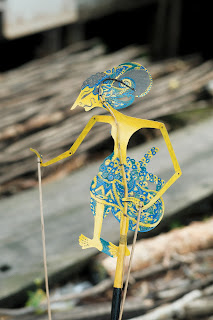 |
| Arjuna is one of the character in wayang puppets. Credit: Source |
The central Javanese theatrical style known as ketoprak is quite popular nowadays. It emphasizes spoken comedy and melodrama rather than music and dance and is based on historical tales from Java as well as Chinese and Arab tales.
Craftwork And Passions
The most well-known Javanese craft is batik fabrics. Multiple dyeings are used to produce the elaborate patterns. Wax is used to cover the area that will not be dyed in a certain hue. Batik designs diverge greatly. Some draw attention to the intricate geometric patterns in white, blue, and brown. Others have vibrant red and other hues with exquisite flower motifs.
Other notable crafts include pottery, glass painting, ironsmithing, leatherwork (wayang puppets), and woodcarving (dancing masks, furniture, and screens) ( kris swords).
Social Issues
Peasants in Java must make do with ever-shrinking landholdings. Many lose their land and are forced to work for better-off peasants who can afford fertilizer and some machinery as tenant farmers, sharecroppers, or wage workers. The military aids business owners in quelling strikes at the factories that are springing up in Java's populous cities.
Bibliography
Keeler, Ward. Javanese Shadow Plays, Javanese Selves. Princeton, N.J.: Princeton University Press, 1987.
Oey, Eric, ed. Java: Garden of the East. Lincoln-wood, Ill.: Passport Books, 1991.
Websites
Interknowledge Corp. [Online] Available http://www.interknowledge.com/indonesia/ , 1998.
World Travel Guide. Indonesia. [Online] Available http://www.wtgonline.com/country/id/gen.html , 1998



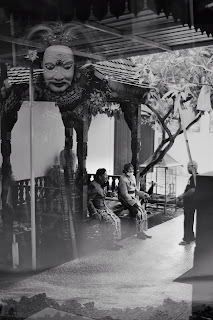



















0 comments :
Post a Comment